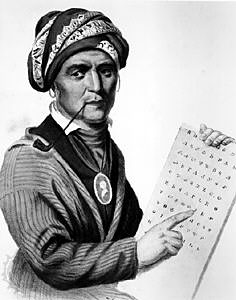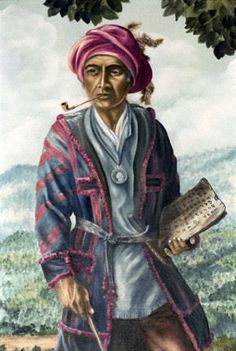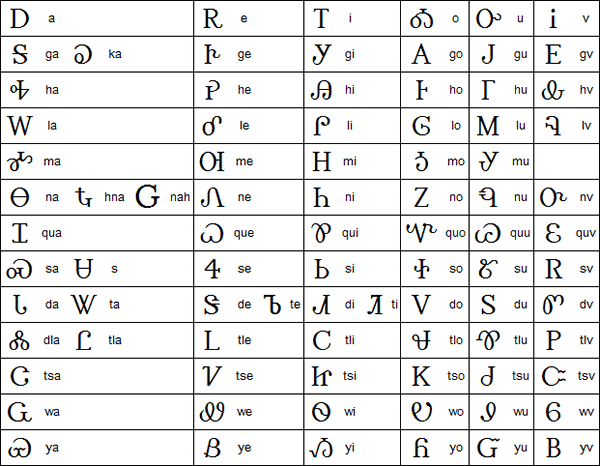Sequoyah Indian was a Native American known for his contribution to the Cherokee language. He was a man of intellect, bringing pride to the Cherokee tribe even up to this day. He contributed a great deal to what has become of the Cherokee language today. This article aims to provide readers with significant background to the life that was lived by Sequoia Indian. To start with, follows are some pictures of Sequoyah for kids:


Sequoyah Indian’s Early Life
Sequoyah Native American was from the strong tribe of Cherokee. Aside from Sequoyah, he also carried other names such as George Gist and Sogwali. He was born around 1770 somewhere within the area of the Tennessee River. Sequoyah never got the chance to know his white father. He grew up with his mother named Wuteh. His family earned a living through a trading post held by his mother. All his life, he never got a chance to go to school to learn any form of language. All throughout his earlier life, she only talked through the Cherokee language.
Sequoyah Indian’s Experiences
Sequoia Cherokee was able to experience being a hunter, as well as a trader of fur. However, in one accident, he had to stop being a hunter. In the end, he took the work of being a silversmith. He took this job as an opportunity to compensate for the fact that he can no longer hunt or farm. As a metalwork, he rendered service for making jewelry and tools. It was during this time and occupation that Chief Sequoyah got acquainted with the white people.
This interaction with the whites made him realize there are more ways of communicating other than the Cherokee language. Moreover, he also discovered the significance of writing as means of communicating to others, especially to those who are far. He marvelled on the fact that symbols can already serve as communicating medium. With that, he made a resolution to devise a writing style for the Cherokee language in order to make his tribe’s life easier. Despite how committed he was, the people around him were somehow skeptical of his plan.
Sequoyah Indian’s Road to Transforming the Cherokee Language to Writing

Sequoyah Indian started first by creating symbols and associating them with different words of the Cherokee language. He used wooden slats in order to record these symbols. For more than a year, he dedicated his time in devising different symbols to complete the Cherokee language. Unfortunately, at the end of the year, he realized that the symbols he have devised were too many, thus, not really effective in making the words in an understandable manner. With that, he decided to abandon the said process and make a new one.
Fortunately, with extensive observation and study, he made a new standard, that is, making symbols for every syllable in the Cherookee language. Thus, in year 1821, he was able to create the syllabary, which entails a total of 85 symbols to best represent the different syllables in the Cherokee words. In constrast to making symbols for every alphabel, syllabary is more the the manifestations of the sounds that were formed by the joining of a consonant and a vowel sound. As an example, the syllable “ti” has a different symbol compared to “to”.
At first, it was hard to encourage the people of Cherokee to learn about syllabary. As it was a new concept, they did not find it necessary to really learn it. With this, in order to make his claims more convincing, Sequoyah decided to teach his young daughter first in order for her to serve as example to the Sequoyah Indians. The next set of people who learned about the system ere his cousing, George Lowery, and Mike Waters, his brother in law from his second wife. After that, he arrange a meeting with several Cherokee leaders for him to demonstrate the convinience of writing their Cherokee language. Now, with the leaders already hooked with the idea, Sequoyah became more welcomed during his teaching sessions to both the adults and the children.After the proliferation of the skill, Cherokee community started to venture into writing newspapers and books.
Other Basic Sequoyah Facts
Some of the major places that Sequoyah Indian stayed at include Arkansas , Washington DC, and Oklahoma. These were some of the few places where he taught syllabary. During his interaction with the white people, he used the term “talking leaves” in naming the paper in which words were being written on. Because of his contribution to the Cherokee language, he was given an award of a silver medal for his inventory. In present times, a statue of Sequoyah can be found in the capitol of Washington D.C. He died in 1843 when he wise about to meet other Cherokee people across Mexico. No one knows exactly how he died.